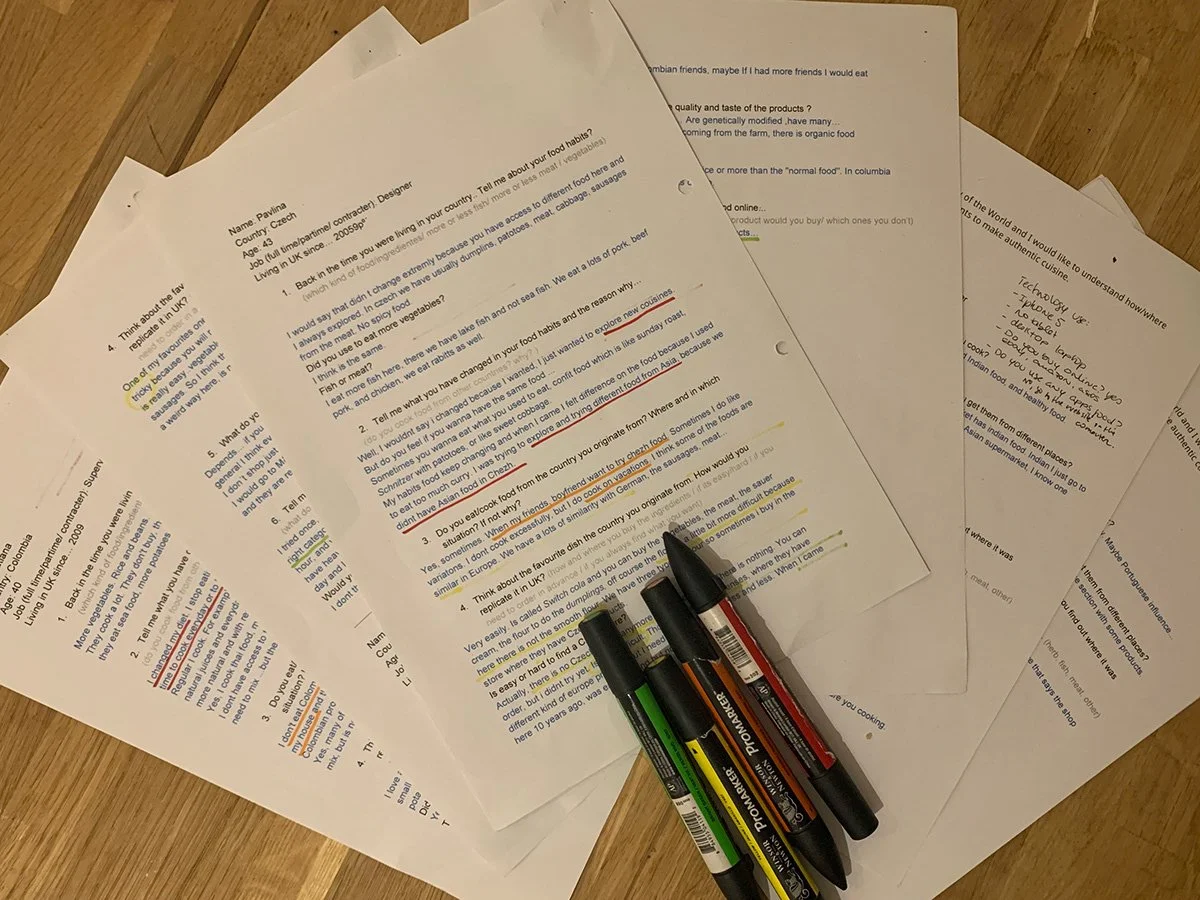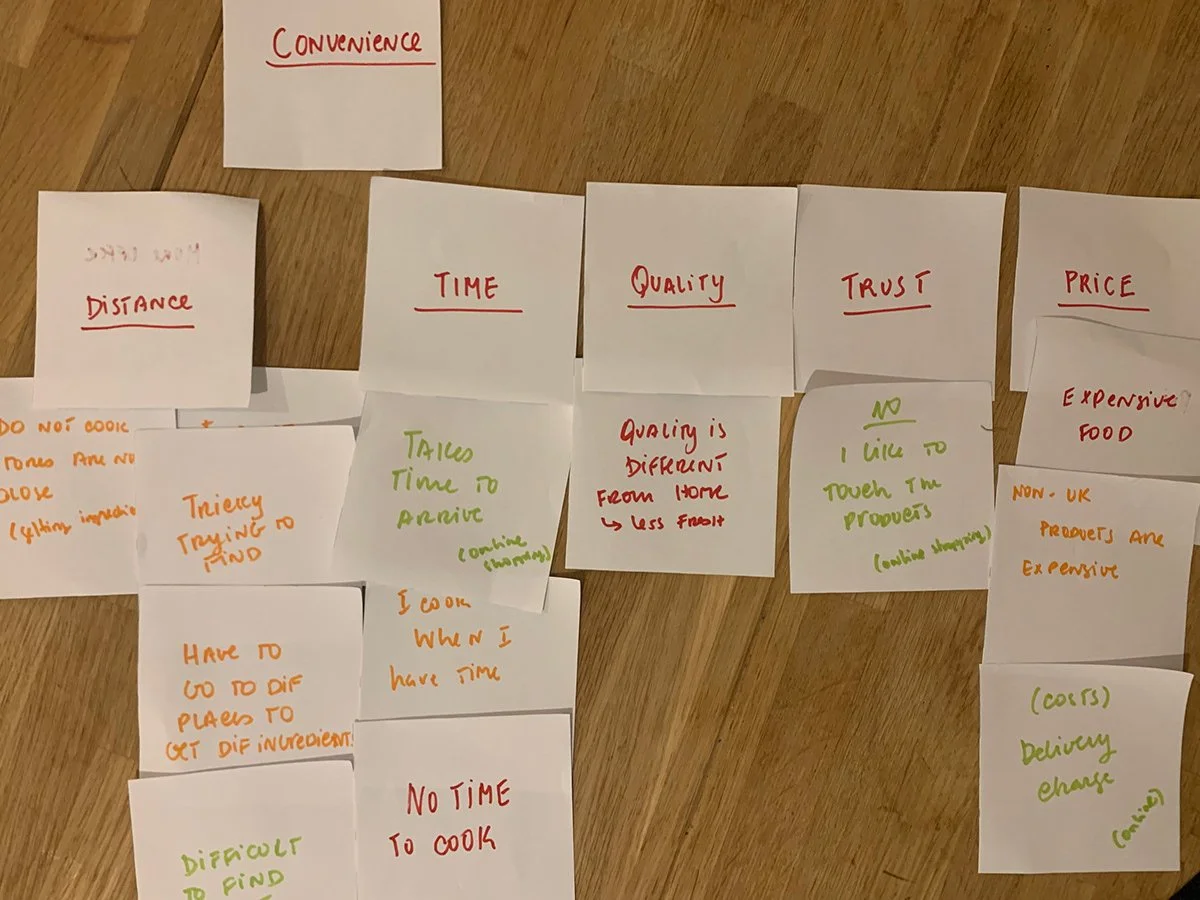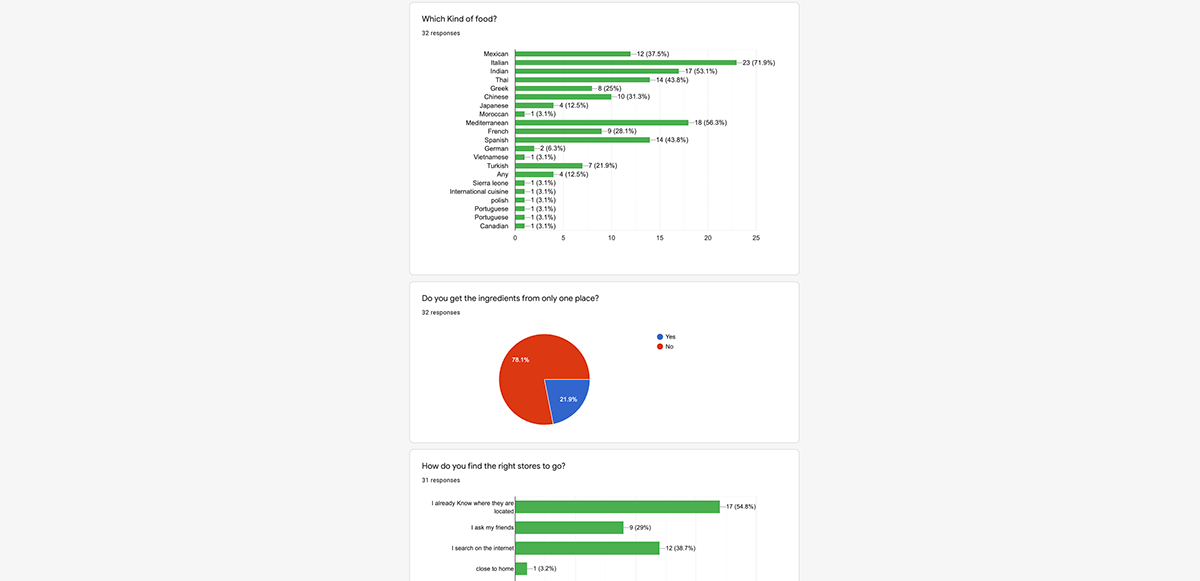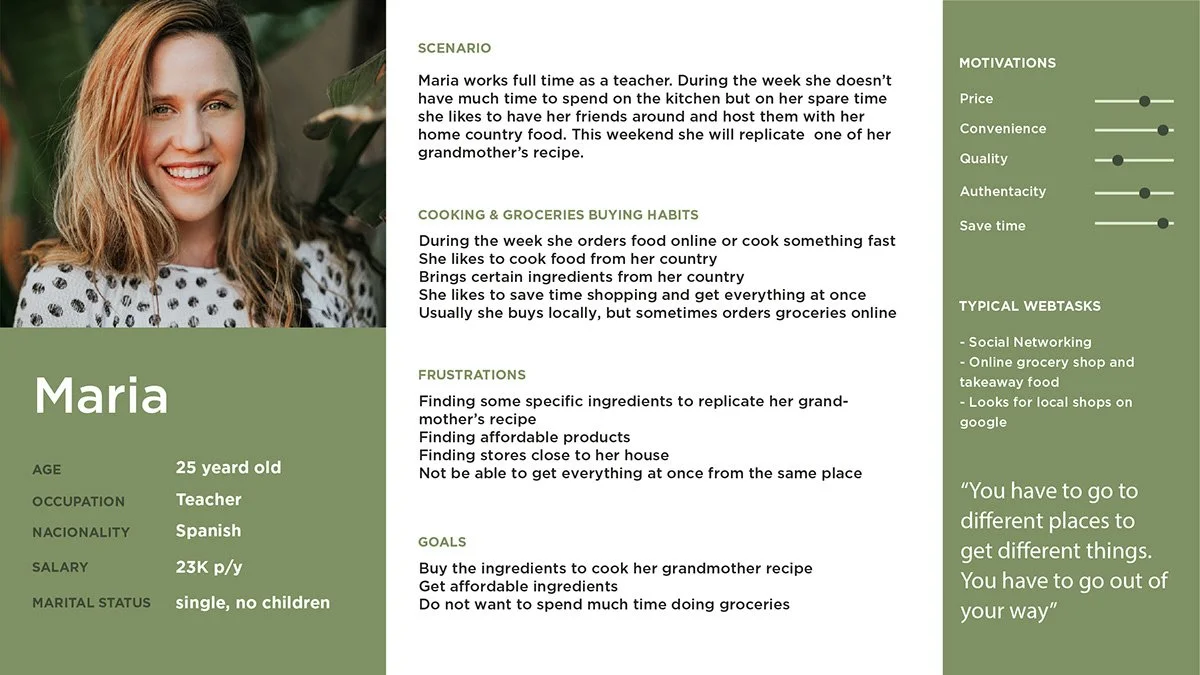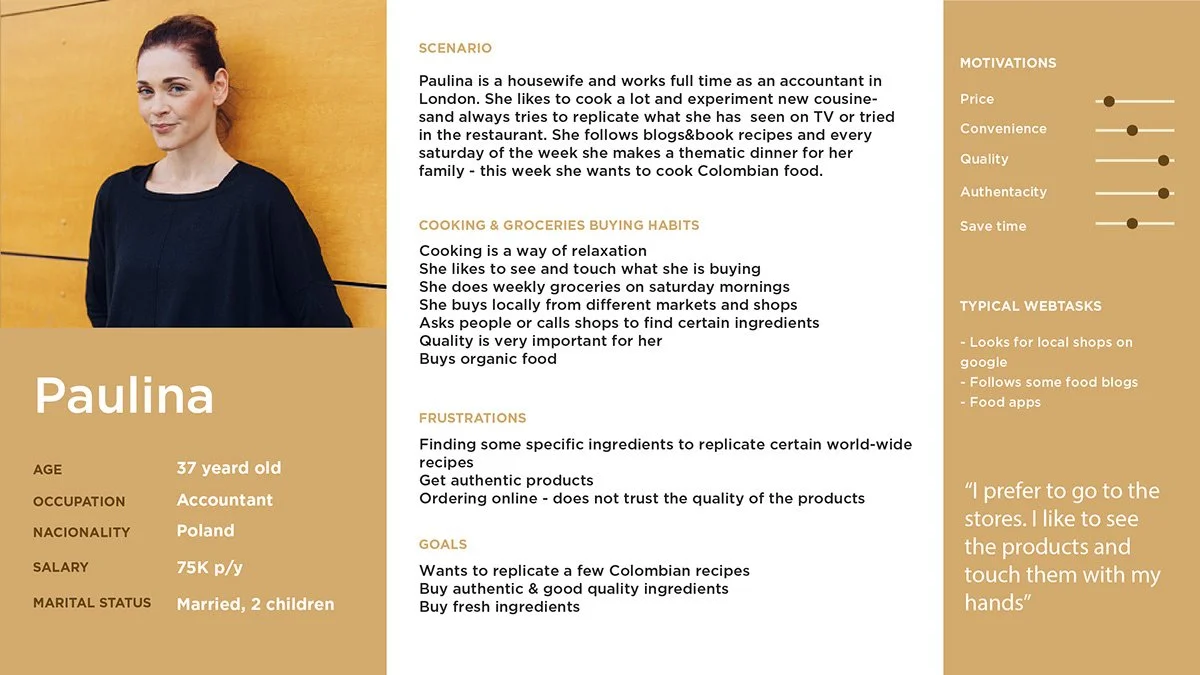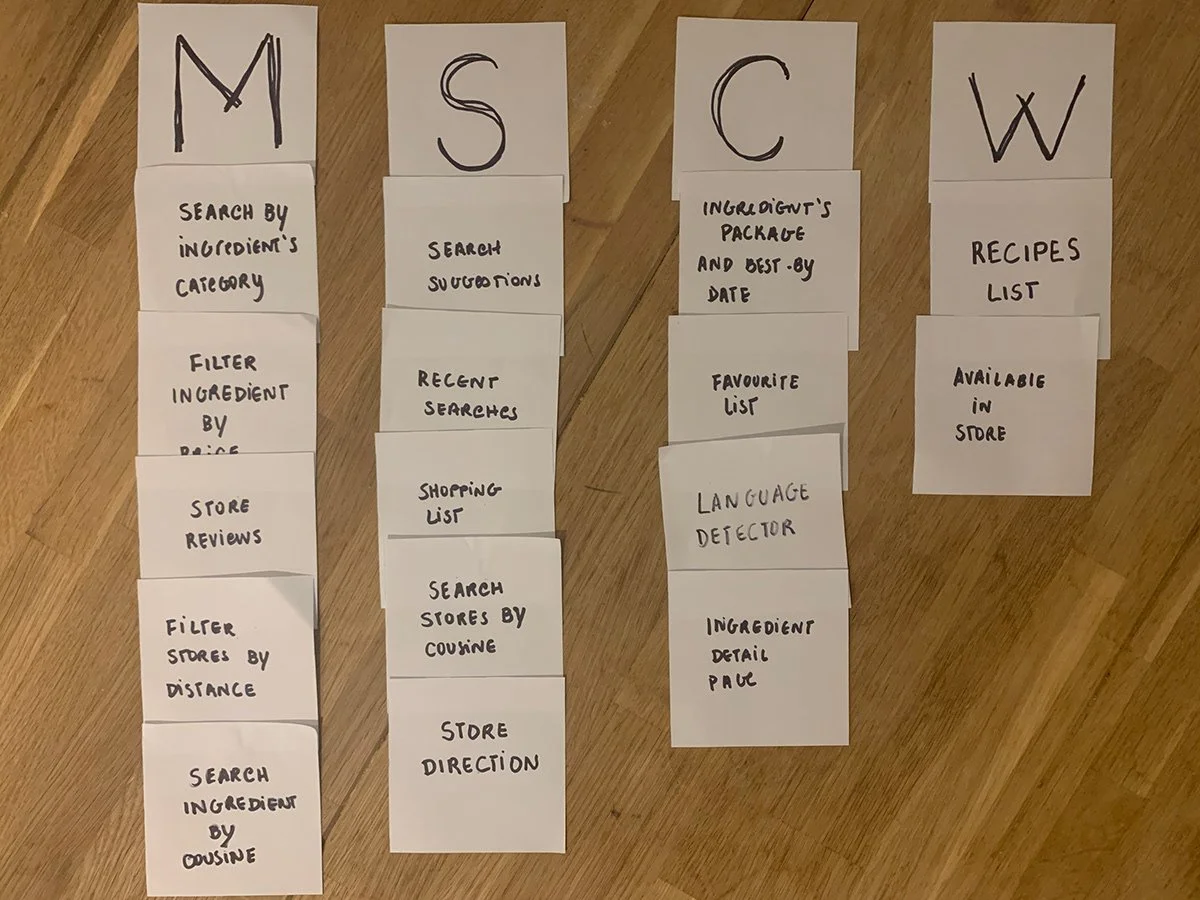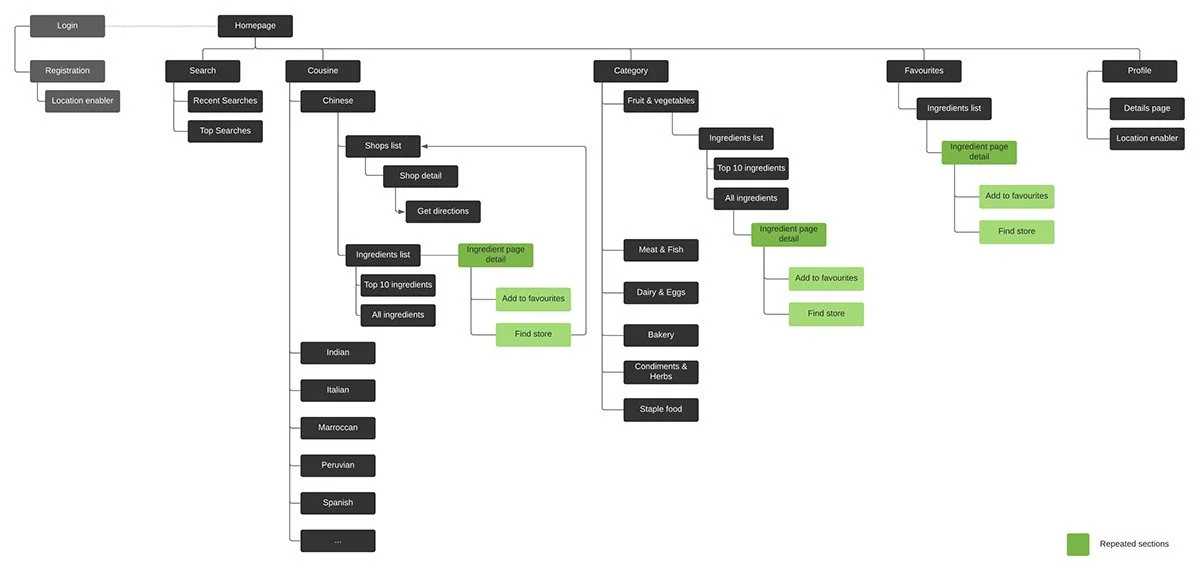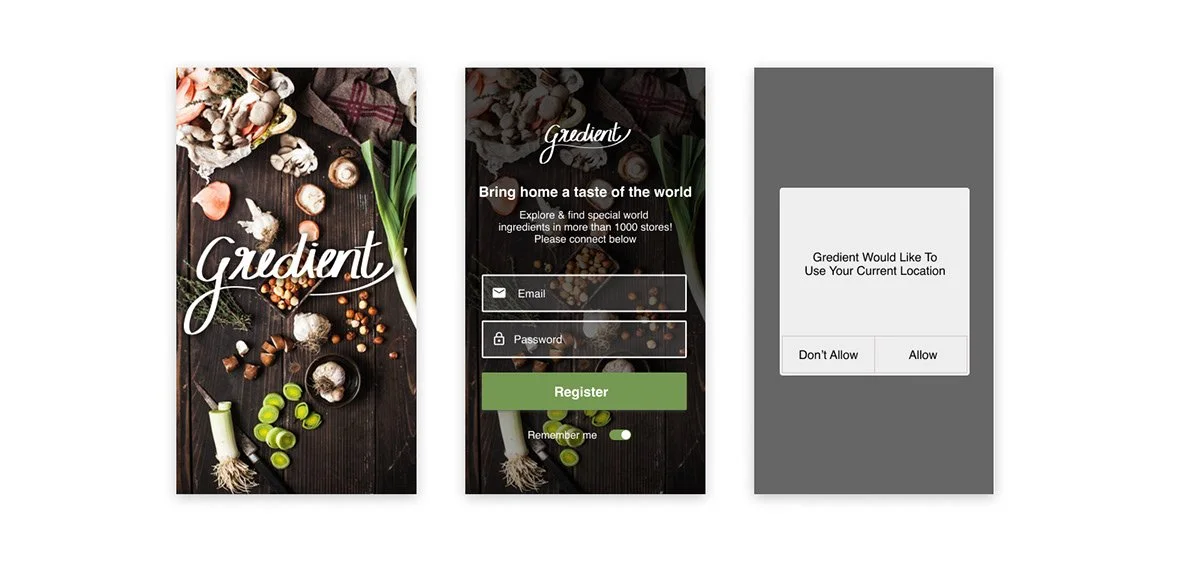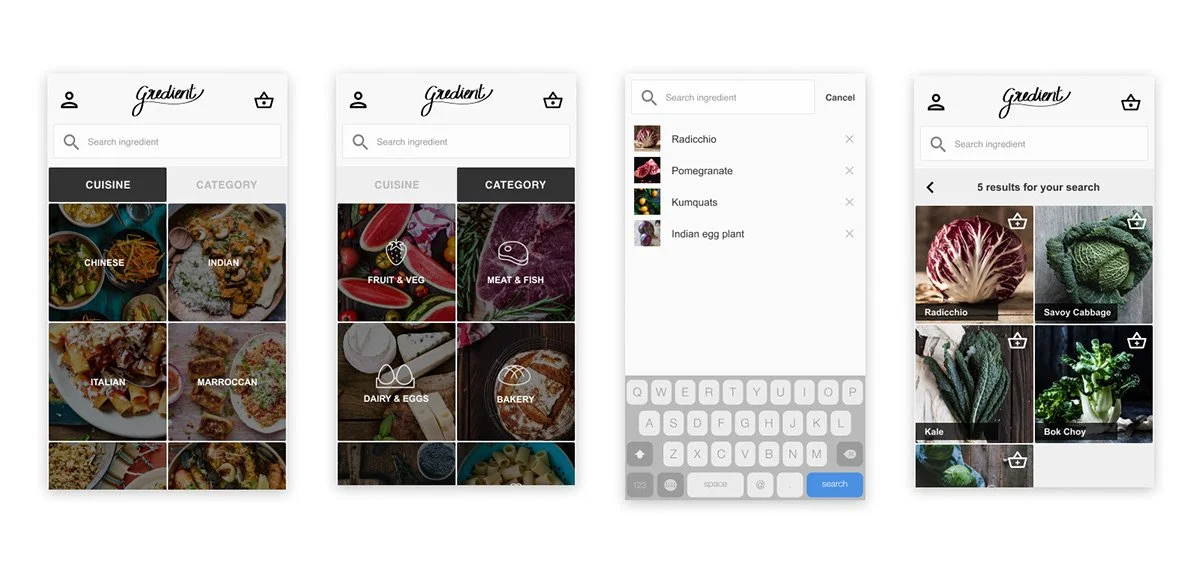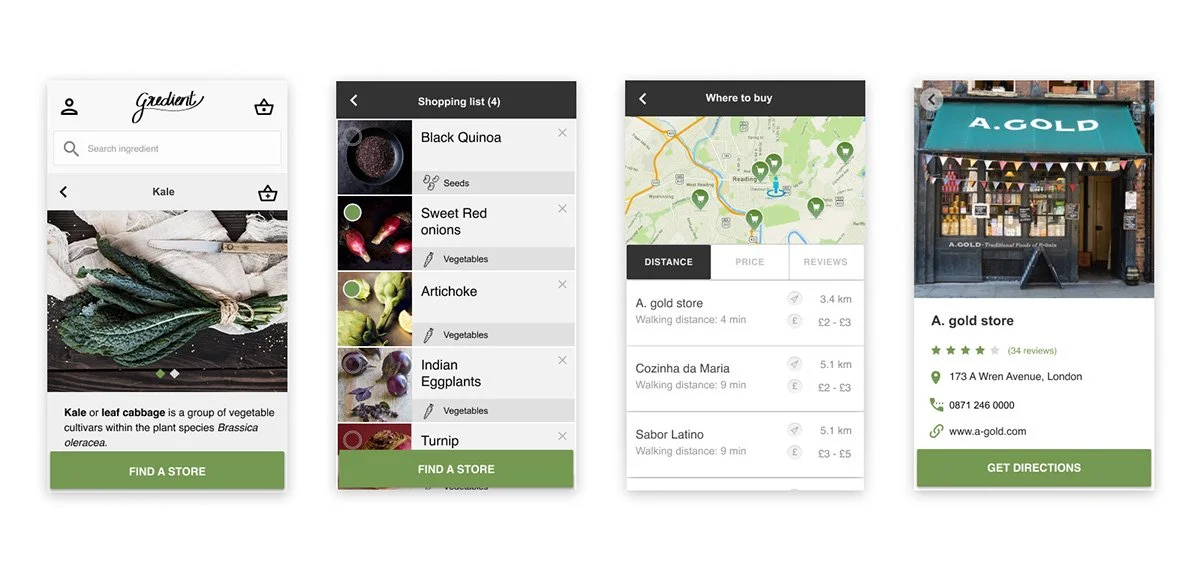Ingredient Finder app
2016 | User Research, Wireframing, Prototyping, Branding
Overview
Gredient is a mobile application that helps individuals who like to cook worldwide recipes find the right ingredients.
Project context
When living in a foreign country you often miss a taste of home and sometimes it can be hard to find the exact ingredients for the recipes you grew up with.
This project emerged from a personal need to cook those home-made dishes while I was living in London. Very often I found it hard to find the right ingredients to replicate Portuguese cuisine recipes, even in a city with such a big variety as London.
Competitor Analysis
I started my research by searching for similar services to have a better idea of the food landscape. I concluded that there were existing services within the food industry but mainly focused on supermarket or restaurant search location, takeaway orders, online shopping and online recipes book.
Even though they were not direct competitors I found it useful to compare and analyze some of these existing products. Conducting this competitive research made me understand what type of value was being offered to users and how they were meeting their needs, and what the strongest and weaknesses point these other solutions had, helping me to inform & shape the final concept of this project.
User Research
To understand if I was solving a problem that actually existed in people's lives and to uncover their goals and needs I made a research plan which consisted in a set of interviews and a survey. My research goal were:
How are people getting ingredients to cook world-wide recipes? What are their obstacles?
What is the willingness to buy online?
To what extent are digital tools already being used to help people find these ingredients?
Finding from interview and surveys
After compiling and analysing 7 user interviews and 32 survey responses I found out that:
Finding 1
Convenience is one of the big factors when choosing to cook/not world-wide recipes. Having to go to different places to get the different ingredients and not knowing if they can find them is time consuming. Also shops are not always close from their house
“I need to go to certain places and ask people for the stores”
“I try another shop or call the shop. Google is an alternative, that says the shop and I will give them a call”
Finding 2
Price plays as a decision point when buying ingredients. Many interviewees make their choice based on price.
“Colombian stores are not close to my house and they are expensive. Italian is cheaper”
Finding 3
Quality of the products is very important when purchasing ingredients
“I like to have contact with the products and get fresh ingredients”
Finding 4
There is a mistrust on the quality of the products when purchasing online making people to perform to buy in person
“I like to see products and touch them with my hands”
“I like to see if it is fresh”
Building empathy
Using the quantitative and qualitative data from interviews and survey results, I defined 2 target group profiles to better empathise with my main user groups and prioritise goals according to their needs.
HMW statements
Using my personas goals and frustrations I develop HMW statements to help me construct ideas for the right user goals.
This exercise gave me a better understanding of what type of features could potentially be included in the product and how they mapped to the user goals. I created a list including features generated from the ideas of the HMW exercise and also generated from ideas that I considered bringing value to the product and making it more attractive to the final users.
Prioritisation
Even though this was a personal project, where I could manage my own deadlines, before jumping to the next stage of the project I decided to scope the project to its minimal viable product.
Using the MSCW method I prioritized the features - since there were no external stakeholders, the prioritization was driven based on my own judgment, insights from the user research, and technical feasibility.
Information architecture & User flow
I created the architecture for the application and I created a user flow to determine how Maria (primary persona) will navigate through the app to achieve her goals using the prioritised features. This helped me to ensure that information is organized in a way that is intuitive to the user.
Sketches and Prototypes
I started the process of designing the application by sketching the different screens on paper which could easily be converted into prototypes. After quick testing sessions without much effort I was able to make small adjustments until I felt confident to convert into digital low-fidelity designs.
High fidelity designs
After a few tweaks to low-fidelity designs, based on feedback from quick user tests, the branding and high-fidelity
designs came to life.
#1 Login screens
#2 Search for ingredient
#3 Finding a store
Closing offs
Talking to people, and understanding their goals and needs was something very new to me at the time and therefore very challenging but it also turned out to be my favorite part of the process.
This project not only gave me a lots of joy but also the opportunity to experiment and put into practice a lot of the UX skills.



